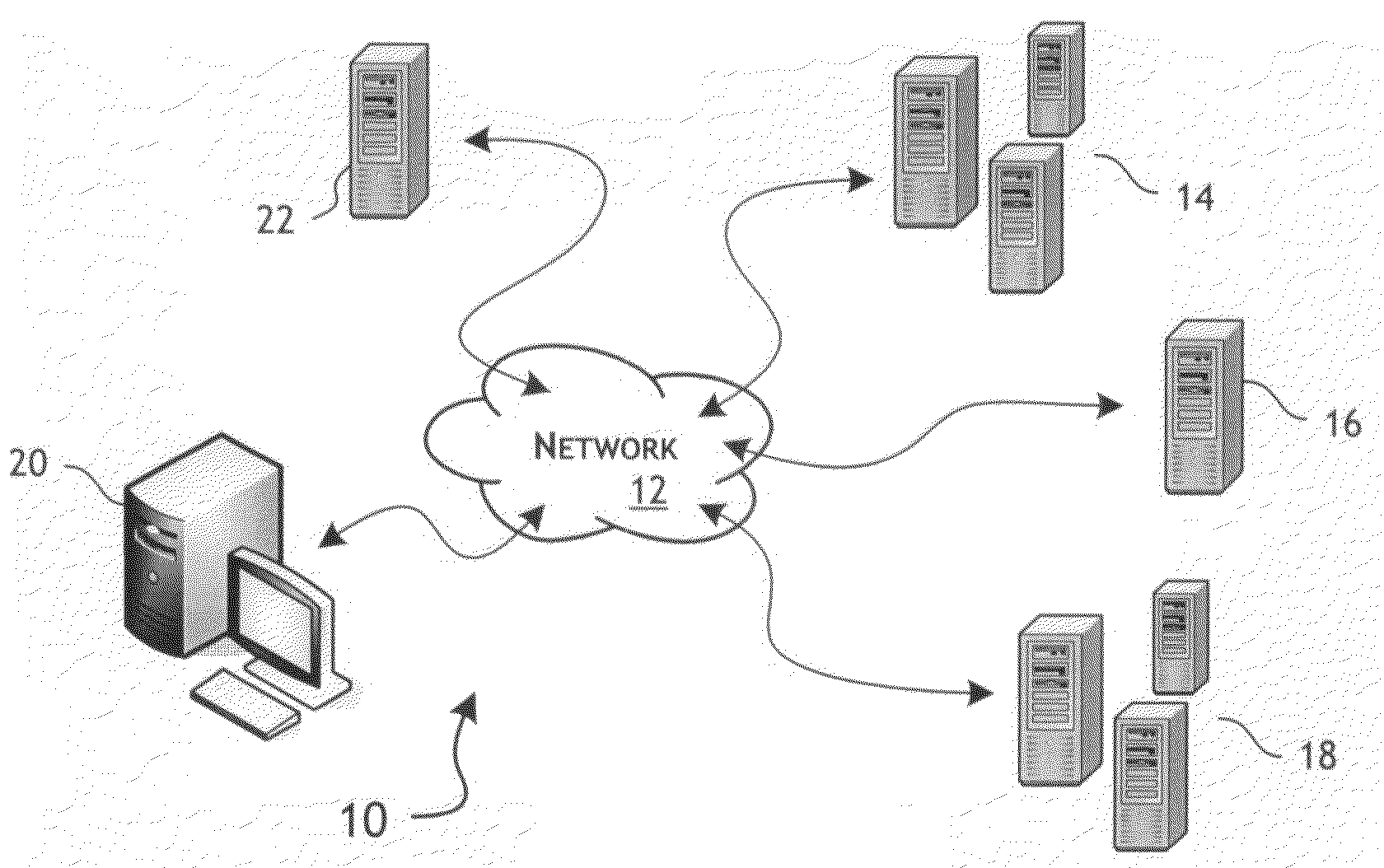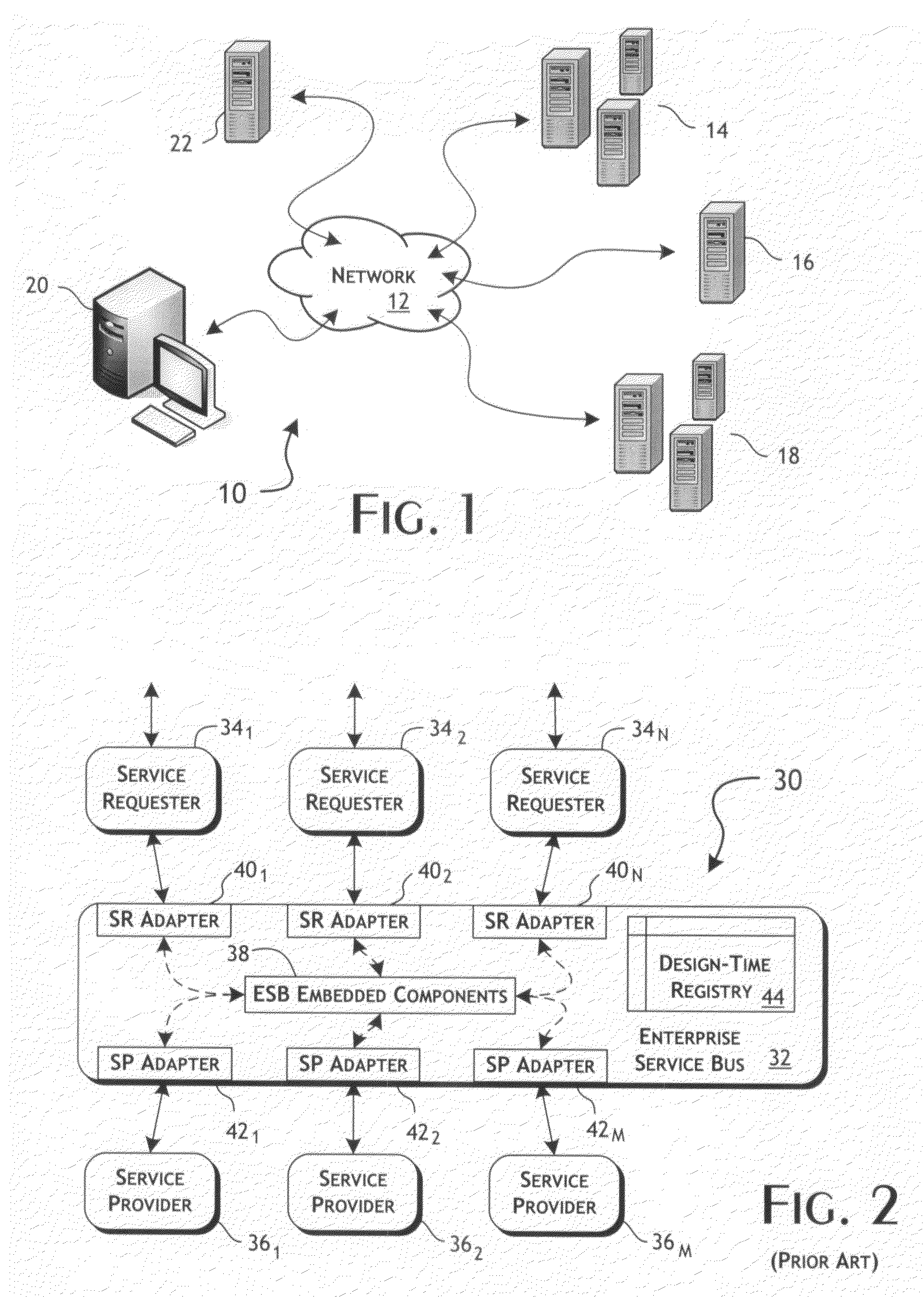Dynamic service-oriented architecture system configuration and proxy object generation server architecture and methods
a service-oriented architecture and proxy object technology, applied in the direction of multi-digital computer combinations, transmission, electrical equipment, etc., can solve the problems of significant difficulties, inability to achieve the agility and flexibility of soa/esb implementation, and the conventional alternative of tightly coupling service requesters to service providers, etc., to achieve efficient failover
- Summary
- Abstract
- Description
- Claims
- Application Information
AI Technical Summary
Benefits of technology
Problems solved by technology
Method used
Image
Examples
embodiment 100
[0057]An expanded architectural embodiment 100 of the direct service invocation infrastructure framework architecture 50 is shown in FIG. 5. The expanded architecture 100 illustrates the ability of the present invention to effectively support multiple tiers of service providers 54 and service requesters 52 and the ready incorporation of business support and legacy components, directly and through a legacy enterprise service bus 32. As shown, a service requester 521, including a service requester core logic component 561, utilizes a service invocation framework component 581 to establish a direct invocation of a service provider 541.
[0058]A second service requester 522 illustrates the ability of a single service requester core logic component 562 to composite multiple service providers through a single service invocation framework component 582. As shown, the business service operation provided by the service provider 541 is separately accessible by the service requesters 521, 522. A...
embodiment 130
[0064]A preferred embodiment 130 of the infrastructure architecture 110 is illustrated in FIG. 7A. The service invocation manager 112 includes a SIM server 132, implemented using a conventional application server, preferably a J2EE-compliant application server implementing REST and web services interfaces, such as Apache Geronimo, JBoss® Application Server™, IBM WebSphere™, and BEA WebLogic™. The SIM server 132 enables network access by developers 134 at design-time and administrators at run-time to the service invocation manager 112 and SIM meta-data store 116 that implements, in the preferred embodiments, aspects of one or more databases. WSDL bindings created in conjunction with the individual service providers 54 are processed and incorporated into an aspect of the SIM meta-data store 116 for use in subsequent development of service requesters 52. The principal SIM meta-data is described in Table 1.
TABLE 1SIM Meta-DataDataDescriptionSRIF Run-Time:Network location, typically URLs...
PUM
 Login to View More
Login to View More Abstract
Description
Claims
Application Information
 Login to View More
Login to View More - R&D
- Intellectual Property
- Life Sciences
- Materials
- Tech Scout
- Unparalleled Data Quality
- Higher Quality Content
- 60% Fewer Hallucinations
Browse by: Latest US Patents, China's latest patents, Technical Efficacy Thesaurus, Application Domain, Technology Topic, Popular Technical Reports.
© 2025 PatSnap. All rights reserved.Legal|Privacy policy|Modern Slavery Act Transparency Statement|Sitemap|About US| Contact US: help@patsnap.com



